So you’re ready to win more customers?
We’ve all been there. You know those ugly moments when converting website visitors into customers seems like an uphill task.
“It’s easier to persuade people by moving their brains than by appealing to their feelings” says Daniel H. Pink in his book, “To Sell Is Human.”
God’s truth.
You should always remember that consumers and prospects primarily use emotions to make informed decisions.
Since emotional triggers make customers decide whether to buy or not, you need to capitalize on them to win more of these customers. According to Business Insider, 40% of your time should be spent on educating and helping your customers, as nobody likes being sold to.
“If you want to know how to sell more, then you better know why customers buy.” – Steve Ferrante.
So here they are, the 10 tactical ways you must implement right now to convert more happy customers:
Encourage Action to Go Beyond Paralysis
Less options equals more sales.
Conversely when you give your buyers or prospects multiple options to choose from, when they’re in the buying process, more often than not, they will end up not choosing any. Don’t let too many options stall decision making. Less is always more. It converts better.
Under this circumstance, how do you get people to take the right action?
Simple. Recommend 1 – 3 options at most. Even in your pricing structure, the moment you’re giving people the opportunity to choose from 3+ pricing options, they might give up.
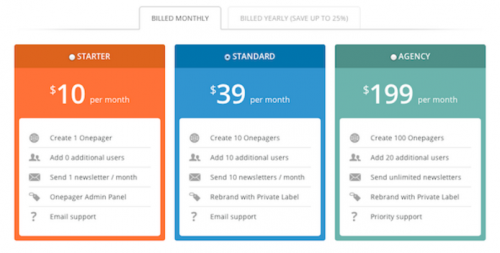
Label Your Customers to Excite Them
What do you call your customers or blog readers? Ramsay Taplin, founder of BlogTyrant.com, calls his audience “Tyrants” while the Steve Kamb, founder of Nerdfitness calls them “Rebels.”
It’s so important to label your customers and prospects. Not only does it give them a sense of belonging, but it makes them trust your brand more, and become brand ambassadors. After all, people usually promote what they believe in, isn’t it?
Your consumer’s brain is hardwired to join and actively participate in a cause which they believe in. Their mind’s cognitive predisposition, tendencies, and inclinations, all play a role in favor of their “impulse purchase.”
When people are in that state of impulse, you can take advantage of it and ask them to Buy Now, Try it Now, Shop Now, etc.
According to Psychological research, “the reptilian” brain (the neocortex) expresses itself in: people’s obsessive – compulsive tendencies, flight or fight response, and their buying actions.
You can trigger such responses through the power words that you use, color, photos, number, price, and so on. When you combine these appropriately, you’ve a negotiation advantage.
According to Psychologist Daniel Kahneman. “If you can walk into a negotiation and be the first one to say a number or offer a price, you’ve gained an advantage. Likewise, if you can help the customer on your website to anchor [his or her] expectations on a certain price, you gain a powerful advantage.”
Know Your Categories of Buyers
Who is buying from you? When you’re in sync with the categories that they fall into, then you’re on your way to understanding your customer’s pain points. It’s crucial to your sales as Neuroscientists describe consumers spending habit, to involve a process that hurts.
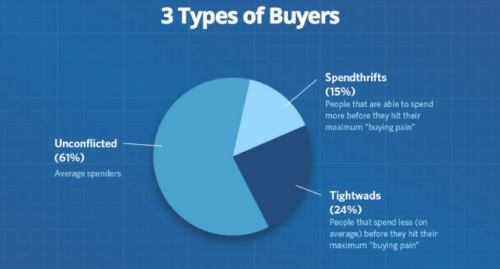
Remember that each one of these types of buyers are looking for solutions. The more you’re able to understand what they’re going through, and proffer answers, the more you speak to their brain.
Yes you can convert more customers and increase sales, when you reduce their pain to a barest minimum, or make it go away completely.
Here’s how to do it:
i). Educate customers on pricing mechanism: Most customers don’t understand how to spend their money wisely, and get the most value out of it. If you want to convert more customers and sales, you should educate them.
Take a closer look at this scenario. Two friends, Kate and Jake at the time of joining a local health club, committed to one year membership each.
Jake decided on an annual payment plan of $600 at the time he signed up while Kate went by a monthly payment plan of $50 a month. Though, both of their payment plans can be seen to be the same annually – who’s more likely to exercise more?
The research by the Harvard Business Review, reveals that Kate is more likely to exercise at the club.
Although, Jake will feel an urgency to get his money’s worth in the beginning of his membership, but that drive will eventually reduce as the pain of his $600 payment dulls in time.
Kate, on the other hand, will be regularly notified to at least renew her membership because her fee is due for renewal every month. She’s sure to be more bent on getting her money’s value throughout the year and so will work out more frequently.
Kate is then more likely to renew her membership when the year is over.
ii). Use attractive pricing and packaging tactic: Gone are the days when you can price your product and package it anyhow – and still expect people to buy. That time is long gone. Trust me.
From running an Apple search ads or writing content to promote your product, understanding how to price your products is critical.
I’m giving you a wake-up call, to package your products and services well, such that the price tag on it will not scare people away. Because if it looks great, then customers would assume that it carries much value.
More importantly, if you sell different products that are closely-related to your customer’s needs, why not sell them as a single package? This would provide a complete solution for the customer.
Every type of buyer, especially those who spend less on average wants to buy the complete pack of your product/service, rather than buy them individually. It makes them feel less stressed.
According to Shopify, “your consumers are sure to go for the full pack comprising of driving assistance package, passive lane keeping assist, etc., at $800 instead of purchasing them one after the other.”
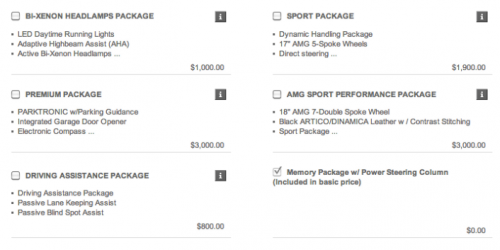
Accept and Use Your Flaws to Win Consumers
Take responsibility for your flaws even if it’s beyond your control.
It’s no secret that consumers doubt marketing claims — for good reasons though as many aren’t credible.
One way you can improve your credibility is to point out your product’s shortcomings.
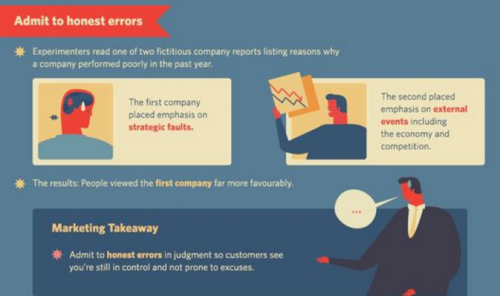
An example is this ad for Volkswagen, which has a one-word headline: “Lemon.”
The opening body copy below the VW photo reads: “This Volkswagen missed the boat. The chrome strip on the glove compartment is blemished and must be replaced. Chances are you wouldn’t have noticed it; Inspector Kurt Kroner did.”
This ad goes on to discuss a “preoccupation with detail.” This Lemon ad is a textbook example of how you can optimize credibility, by admitting honest errors in judgement.
This was exactly what Back up brand did when they launched their second online course. The founder started his copy by sharing a story of how his first product failed. This excited this audience, and sales increased.
When marketers blame exterior forces (even if they’re true), it gives consumers a reason to view them as not having the ability to fix their problems. Don’t do it.
Create and Leverage Scarcity and Urgency
And get more sales.
Yes it’s doable. Do you need a proof? Okay, this company increased sales by 332%, using scarcity and urgency.
Why scarcity?
Scarcity places a limit on a product or service with the goal of increasing sales via the pressure you place on customers. The fear of missing out causes your consumers to make a quick decision to buy right now.
Truth is, when your products begins to run low, the demand increases and you get more sales.
The relationship looks like this:
- Plenty of stuff — no one wants it.
- Not much stuff — everyone wants it.
This concept of scarcity will always produce results, especially when your product or service is perceived to be valuable through your packaging. It will cause your customers to act immediately (urgency).
I’m not proposing being dishonest, like pretending that you’re running out of product while sitting on a huge stockpile. That has never worked. However, you can change how people view/perceive your product.
For example, you can announce that you’re accepting only 400 new customers during the month of September.
Does it matter that you average 80 customers a month ordinarily?
As long as you put a limit on your acceptance rate — any limit — you’re creating a sense of scarcity.
Mind Your Language
The message (words) your brand project is powerful – don’t underestimate it. It’s responsible for your buyer’s decisions — from finding you to buying from you.
Therefore, to attract better customers, learn to use the language that strikes a note in addressing their pain points.
Certain words are more persuasive than others. For example, words such as immediately, instantly, fast, etc. can “flip the switch” on the mid-brain activity. This makes your consumers more bent on buying from you.
Use Conflict to Engage Your Customers
Don’t get me wrong. Your brand should never set out to offend anyone. However, striving to please every potential customer isn’t going to be possible. Why not use a little bit of conflict in your copy to engage with your customers? Can you do that?
For example, Newspapers, occasionally feature the worst case scenarios — to stimulate readers and consumers into taking actions.
The essence of such conflict isn’t to create enmity, but to arouse buyer’s interest, and at the same time prove you’re different.
A unique selling proposition is more about reaching out to your ideal customers, where and when it hurts them, and less about who you are.
Your brand’s true voice separates the “chaff” from the grain. It sets apart your ideal customers into your camp, and this involves going against some ideals, beliefs, and perceptions. You’re different.
Look at this scenario: In 1964, Lyndon Johnson ran against Barry Goldwater. He wanted to stir up public fear that President Goldwater would raise the chance of a nuclear war.
The “Daisy” ad, which ran only once, showed a little girl, followed by a nuclear explosion with a voice-over of LBJ ominously stating, “These are the stakes. To make a world in which all of God’s children can live, or to go into the dark.”
Johnson carried 44 states, and took 61% of the vote in a landslide win. That’s how conflict can be used in a good way to create curiosity, and get more attention.
Share Your Brand Message
A customer-focused relationship is your best bet at converting more customers, and this is based on a clear communication of your message.
More than 64% of buyers attest to this truth. A step further involves engaging these consumers with your message.
So how can your message engage?
Offer tremendous value
Your message should resonate value at the core of your consumers’ needs. This is the beginning of your consumer experience, one that should be exceptional.
Few brands, such as Toms and Zappos understand this perfectly.
A scenario from the book, “Positioning” by Al Ries and Jack Trout, is a good example.
The Jif brand launched the “Choosy moms choose Jif” campaign, to position itself in the competition for baby food.
Sooner than expected, every mother wanted to be identified with his brand value, which emphasized on the importance of carefully choosing their baby’s food. You can equally use storytelling to share your brand message. As long as it resonates with the right audience, you’ll not only attract new customers, but lifelong brand advocates.
Play an Opponent and Win
We’re all playing against people, events, or circumstances. Until you realize that the human brain is constantly on the lookout for an opposition – you would find it difficult to win.
Your consumers attempt to make the right decisions based on a chaotic web of options, scenarios and effects.
Critiquing what your consumers feel they know can pay off especially if you leverage on the operation of content and product. The same source has it that an intelligent person wants to represent a given information.
Therefore, you’re presented an opportunity to improve on this effort, and gain more customers. And always back up such bias with solutions, so that you can dismiss buyer’s anxiety
As you can see, your brand message when it strikes a bit of a controversy is good, because it demands an undivided attention from your core audience.
Always Reward Your Buyers
Yes do it always. Reward your buyers.
According to HubSpot, 70% of the entire sale of your products and services now, or later is a resultant effort of the 20% of your buyers. If this is the case, then your sales reflects how you treat your customers.
Why must a customer buy from you and not your competitor?
There’s a popular saying that “the taste of the pudding is in the eating”, and such should be the good story that follows your customer’s encounter with your brand.
I’ve already told you how to do it. Give your customers valuable stuffs.
Reward them
Consumers love freebies. And your buyers deserve to be at the center of your business.
The process of exchange of rewards (loyalty) is known to define every worthwhile transaction, and stands a shoulder taller than any other technique of acquiring new customers.
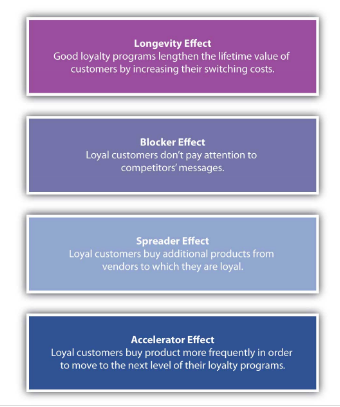
Conclusion
You can sell to your target audience anywhere online and offline, and still have them tell others about your fantastic offerings. But you’ve got to speak to their emotions first, and win them from “within” which is a priority.
Selling through psychology isn’t a one-time thing. You need to constantly learn and adapt to changes as they emerge.
You should apply one or a handful of these psychological triggers, and convert more customers to your business. You’ll be amazed!
Over to You
Do you acquire new customers through psychology?
Share your thoughts below.
